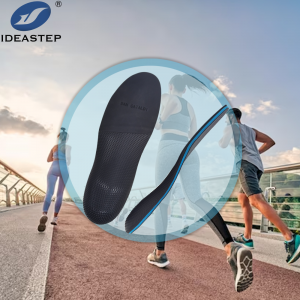
Prefabricated insoles, also known as over-the-counter shoe inserts, are widely used to provide support and comfort for individuals with various foot-related concerns. In the previous blog”What Are The Benefits Of Prefabricated Insoles?“, we shared the benefits of prefabricated insoles. This article aims to provide a comprehensive exploration of the effectiveness of prefabricated insoles in correcting gait and addressing biomechanical issues.
1. Impact on Foot Alignment
Prefabricated insoles can play a role in correcting gait by providing support for proper foot alignment. These insoles are designed with features such as arch support, heel cushioning, and metatarsal support, which can help promote better foot positioning and alignment during walking and other weight-bearing activities.
2. Support for Overpronation and Supination
Individuals with overpronation (excessive inward rolling of the foot) or supination (outward rolling of the foot) may benefit from prefabricated insoles designed to address these biomechanical issues. The insoles can help stabilize the foot, reduce excessive pronation or supination, and promote a more neutral gait pattern.
3. Cushioning and Shock Absorption
Prefabricated insoles often include cushioning materials such as gel, foam, or air pockets, which can help absorb shock and reduce impact during walking. This cushioning effect can contribute to a smoother gait and may alleviate discomfort associated with walking for individuals with gait irregularities.
4. Addressing Common Foot Conditions
Individuals with common foot conditions such as flat feet, high arches, or plantar fasciitis may find relief from gait issues through the use of prefabricated insoles. These insoles are designed to provide targeted support for specific foot structures and conditions, potentially leading to improved gait mechanics.
5. Considerations for Individual Needs
While prefabricated insoles can offer benefits for correcting gait, it’s important to consider individual needs and the severity of biomechanical issues. In some cases, custom orthotics prescribed by healthcare professionals may be necessary to address complex gait abnormalities and provide tailored support for specific foot irregularities.
In conclusion, prefabricated insoles can have a positive impact on correcting gait by providing support for foot alignment, addressing overpronation and supination, offering cushioning and shock absorption, and targeting common foot conditions. If you are interested in Prefabricated insoles, you can continue to visit this page (https://www.aideastep.com/classic-pre-fabricated-orthotics/) and tell us your needs.
